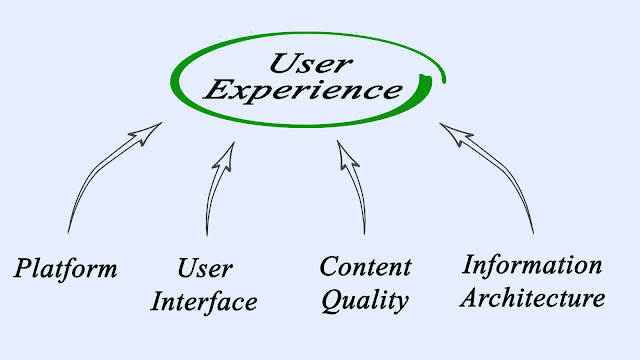Clarity of User Experience [UX] in Digital Marketing:
Use Experience is the heartbeat of value creation in the digital economy. It has become accepted and allowed to rule the digital marketing world. However, most people find it intimidating and confusing to create and provide value that satisfies their customers, especially in the present-day mayhem of AI tech chatbot generative threats in the digital business landscape.
User Experience is not limited to online responsive and mobile-friendly shopping and purchasing valuable and quality product provision. But also, graphic designers, tech engineers, service providers, content creators, and marketers to implement more human characteristics and customer-centric strategies in their business processes and operations.
Clarity of User Experience in Digital Marketing
So, as an entrepreneur and marketer, you need to get into the practical and functional grips of this concept for sustainability and success in brand building. However, floaty and bouncing AI tech designs and heavily automated business processes and operations do not spell a User Experience that satisfies customers. But User complexity, usually the scientific one presented by Harvard scholar research papers, not the practical and functional definition any layman on the globe can understand and feel inspired to pursue and achieve in their quest to be a successful entrepreneur and build a brand of value in their industry and niche market. Let's dive in and explore the practicality and functionality of this concept in brand marketing.
User Experience in Brand Marketing
User Experience [UX] is the bull’s eye of any brand that has evolved relevant enough to adopt human-centric and customer-centric values in its approach to business growth through brand marketing for solid brand building. Yet, most entrepreneurs and marketers find this quality assurance principle elusive in their brand-building process and journey. However, its core, [UX], is value creation and provision of value in the market.
In other words, that means; for there to be user experience, there has to be a satisfying process of value and benefit transaction between the creator and the user. The challenge is, how best can you understand your purpose and value to create value that can satisfy and fulfill user experience in the market? Before we dig into the underlying principles for achieving user experience in your brand-building journey, let’s further define User experience.
What is User Experience?
The user experience should not be jargon like most entrepreneurs and marketers seem to take it. It is a simple and practical guideline for value creation and offering value in the market to benefit all parties concerned. It is the satisfying transactional process between you and your customers in exchange for your offers and their appreciation of its value and benefit in their life and business. It is the user-friendliness of your brand offers in the market.
Like in content creation, user experience can be defined and achieved by focusing on the contextual relevance and meaning of your brand offers without interference from the hallucinatory tone and voice that comes from AI chatbot-generated content that most AI tech apps and tools enthusiasts are rolling out and recommend in the digital market.
So, how best can you redefine user experience in a business world where the customer is the king and key to your success and survival in the market? Don’t sweat. We have your back covered to remain walking high with unbeatable positioning, presence, influence, and conversion of your brand in the market. Here are the five characteristics that will demystify user experience as harassment to all your brand marketing strategies by seeing the concept as the essence of your brand-building efforts. In simple terms, it means to try to make your offers in the market as follows;
Useful
User Experience starts with how the users find the design or content created helpful in solving their problems in business. That can be looking at how practical and functional the product or service is in the market. In brand marketing and building, a product can be a software system or information-based package to provide a service like teaching, coaching, and consultancy. And can also be physical products like a tech app or tool. The usefulness can be its efficiency in completing the tasks you created it for in the market.
User experience is how appropriate your brand product or service is to your target customers and their satisfaction with its interaction and immersive interactivity with them for their benefit from its value and purpose in their lives. So, this points to having a thorough knowledge of your customer’s pain points and needs and what they can value as a practical solution that suits their budget and abilities to use it without limitations.
That makes it very useful for optimizing productivity for sustainability in brand building. If it is, the next challenge in user experience is using it with zero friction in fulfilling its functionality as created and designed. So, let’s jump in and explore usability that can clarify user experience in brand building.
Usable
Usability is how easy the product or service is in the tasks it is supposed to help its users. That can refer to how user-friendly it is and whether it needs technical knowledge and training to use it properly. Is the product or service saving any purpose in your target audience’s lives and business?
Can your clients use it and instantly realize its use and the benefits it adds to their daily operations? Any product or service provided, especially in technology, must be created to do more with less. Is it user-friendly and minimalist for users to enjoy using it without stressful hiccups?
Minimalism is the name of the game. Today’s economy needs creators to focus on value creation guided by the principles of safety and efficiency in productive solutions with integrity and compliance, especially in the tech industry, where numerous app creators are scrambling to kill it big in the AI tech business.
Usability and customer-centric approach should also perceive user experience as the ease of using any tech app or tool with aplomb for efficiency in business processes and operations that promote sustainability in brand building. Do more with less stress, should be the game.
Appealing
Love at first sight, yes. But it should be deep. Otherwise, it can be misleading for the underlying value of love that can survive the storms in life and business. The beauty product, laptop, or iPad can be natural, sleek, and shiny. It is usability, usefulness, and design simplicity that will make it more appealing in fulfilling its functionality in the market.
So, appealing as in the look and feel of the product or app is more than what your senses of sight and touch, but also the finished Wireframe of the product and service that should promote ease of use for manipulation. That refines the flow and data entries and defines features and components that ease the transfer of knowledge and information for user experience.
It is not just about the look and feel of the product and service. But also, its compactness and portability. First impressions count. If it is not appealing to the eyes and feel, it won’t appeal to the senses to make purchasing decisions with your customers.
Accessible
You can have well-designed products and curated content, but distribution for it to reach its target market can be a challenge. That means your clients won’t enjoy spending more time interacting with your brand items for close connection and immersion with your products and services. Accessibility can point to your delivery systems and reliability in accessibility.
Are your products or services readily available and accessible without undergoing horizontal layers of corporate bureaucracy? That reminds me of an advertisement where the character the advert highlights how the lending company he was recommending has reduced being too traditional by becoming faster and more accessible in its business processes and procedures.
With the instant gratification bug catching up with everyone, especially Gen X, Millennials, and Gen Z, if your customers need your product or service, they need it there, then, and immediately for their solutions and must feel the satisfying benefits. That is why most creative entrepreneurs are transforming their business models and dealings into a more open and non-traditional approach to high stacks of corporate bureaucracy.
Authentic
The originality of your product or service is what will make you unique and stand out in the market. It is not about duplicating and pasting other people’s original designs and conceptual ideas already in the market. You cannot improve user experience on an already used product and service. User Experience comes with the excitement of testing and finding something authentically yours and having that big hunch to see it dominating the marketing in providing long-lost and longed-for human-centric and customer-centric value that improves people’s lives and businesses.
As an entrepreneur and marketer, be willing to unlearn long-practiced traditional methods of the salesy mentality and mindset in the market. Be free-spirited to accept, adopt, innovate, and adapt to digital marketing strategies that allow room for being more human and customer-centric for optimizing user experience in their interaction with your brand.
So, whether it is content creation, web design, tech app or tool design, fashion and market strategy, and your whole brand-building approach, user experience is the key. But it should not be intimidating and manipulative. Just stick to relevant value creation guided by a human-centric and customer-centric approach based on the core values and the purpose of your business for sustainability and success in brand building.

.png)










Comments
Post a Comment